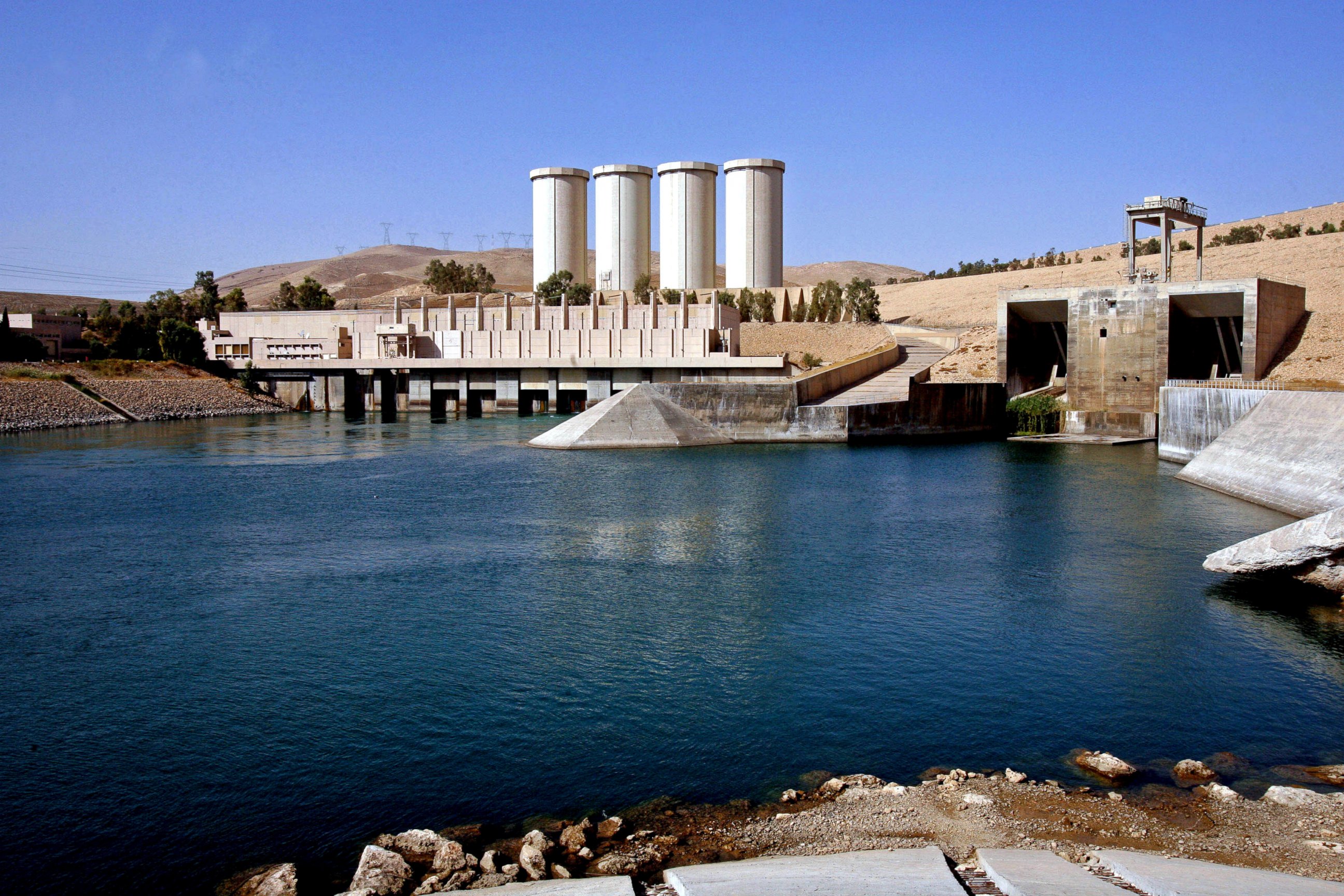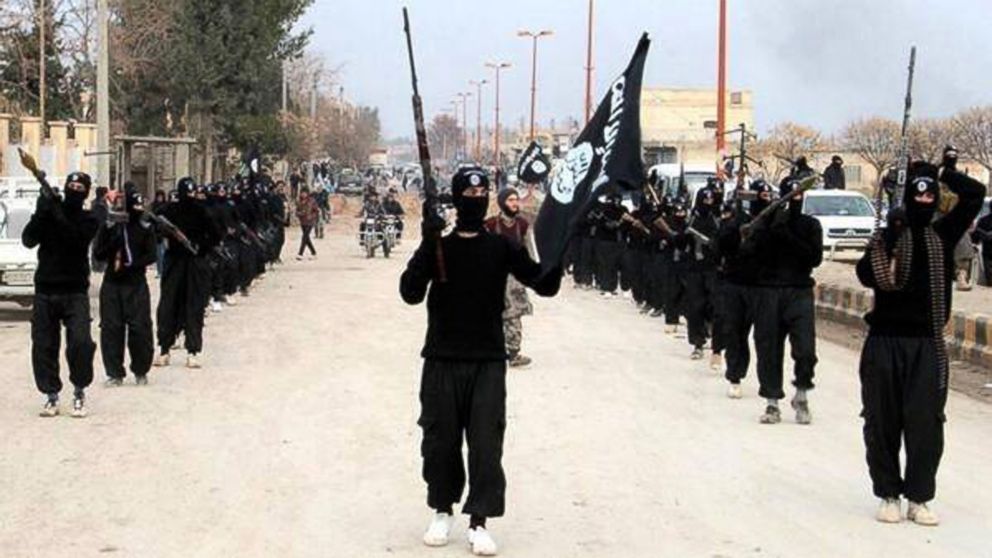US 'Extremely Concerned' About ISIS Takeover of Iraq's Most Dangerous Dam
Experts: Extremist group will have to work to keep dam from flooding millions.
— -- The U.S. government is “extremely concerned” about a brutal group of Islamist fighters seizing control of the Mosul Dam, a gargantuan, poorly-constructed dam in Iraq that, if breached, could launch a 65-foot-tall wall of water into one of the country's largest cities and send flood waters all the way to Baghdad.
After a day of conflicting reports about the status of the dam, which was guarded by well-respected Kurdish peshmerga troops, a State Department spokesperson told ABC News late Thursday night that the dam had indeed fallen into the hands of the extremist group the Islamic State of Iraq and Syria, or ISIS. The group is still believed to be in control as of this report.
“The situation on the ground is fluid but the latest information is that [ISIS] had advanced on Mosul Dam and has taken control,” State Department spokesperson Michael Lavallee said. A second U.S. official and an Iraqi official familiar with the dam’s operations confirmed the ISIS takeover.
“We are extremely concerned by this development,” Lavallee said, “and we are coordinating with the Iraqi security forces and Kurdish peshmerga commanders to develop options to mitigate the threat that this poses.”
That threat is a severe one, according to U.S. government reports, officials and outside experts.
US Carries Out Airstrike Against ISIS in Iraq
Why Control of a Terrifying Dam in Iraq Is Life and Death for Half Million People
Iraq, Syria and ISIS: What It All Means
The Mosul Dam was constructed in the mid-1980s on what reports indicate was a terrible spot to build a two-mile-wide dam.
“Mosul Dam, the largest dam in Iraq, was constructed on a foundation of soluble soils that are continuously dissolving, resulting in the formation of cavities and voids underground that place the dam at risk for failure,” said an urgent letter sent from David Petraeus, then commanding general of the U.S. Army, and Ryan Crocker, then U.S. Ambassador to Iraq, to Iraqi Prime Minister Nouri al-Maliki in 2007.
The dam requires “extraordinary engineering measures” – namely constant grouting operations -- to fill in the holes and “maintain the structural integrity and operating capability of the dam,” according to a U.S. Army Corps of Engineers (USACE) report from the same year.

For 30 years –- and through several periods of violent conflict -- the Iraqi government has managed to keep the dam upright by continuously pumping in literally tons of grout like an industrial version of the little Dutch boy, as a geotechnical expert who worked on the dam put it.
But the U.S. says any failure of the dam could be “catastrophic.”
“[T]he most severe impact of a dam failure would be [for] the City of Mosul, located 50 kilometers [31 miles] downstream of the dam,” Petraeus’ and Crocker’s 2007 letter says. “Assuming a worse [sic] case scenario, an instantaneous failure of Mosul Dam filled to its maximum operating level could result in a flood wave over 20 meters [65 feet] deep at the City of Mosul, which would result in a significant loss of life and property.” Mosul alone is estimated to be home to more than 1.5 million people. Flood waters, albeit at a lower level, could reach all the way to Baghdad, more than 200 miles further down the Tigris, depending on the performance of another smaller dam further downriver.
A 2011 report written by a USACE official and published in Water Power magazine estimated failure “could lead to as many as 500,000 civilian deaths.”
State Department spokesperson Jen Psaki told reporters Monday that Mosul Dam “has been in the sights of [ISIS] since its offensive began in June to further threaten and terrorize the Iraqi people.”
In addition to flooding concerns, the dam is also a “key source” of power and water for the surrounding area – making it a vital piece of infrastructure either way, another State Department spokesperson told ABC News Wednesday. An American intelligence source agreed and said that ISIS's potential control over and exploitation of power and water is a focus of U.S. intelligence community.

Prior to the ISIS takeover, a U.S. government official long-familiar with the dam said the possibility of the Iraqi government losing control of the structure was a scary one. ISIS may not want the dam to fail, considering it controls territory that would be flooded and the group could leverage its control over the water and power source, but the U.S. official said it would still be up to the jihadist group to keep the grouting going.
“If ISIS does indeed have or gain control of the dam, will they listen to the dam engineers who have been working there for decades and who understand the need for constant grouting? … And then this is the biggie: If they can’t or don’t want to grout, how long will the dam last?... And if it fails, will it be a catastrophic all-at-once failure or more of a slowly building uncontrolled release?” the official told ABC News. “The short answer is no one knows. This is all guesswork anyway.”
It is possible ISIS will retain the dam workers, as they have at other dam facilities they have taken over in Iraq, a U.S. intelligence official said. But the official said that approach “could prove more difficult” since there were early reports that dam personnel fled as ISIS attacked.
The official familiar with the dam said that he is not aware of official U.S. calculations about how long the dam would last without grouting but says he understands it to be “on the order of weeks, not months.” The geotechnical expert agreed that "weeks" was a skeptical, but entirely possible estimation.
“The potential for a disaster can’t be ruled out and should be of great concern to all parties involved,” the U.S. official said.
CLICK HERE to return to the ABC News Investigative Unit homepage.




